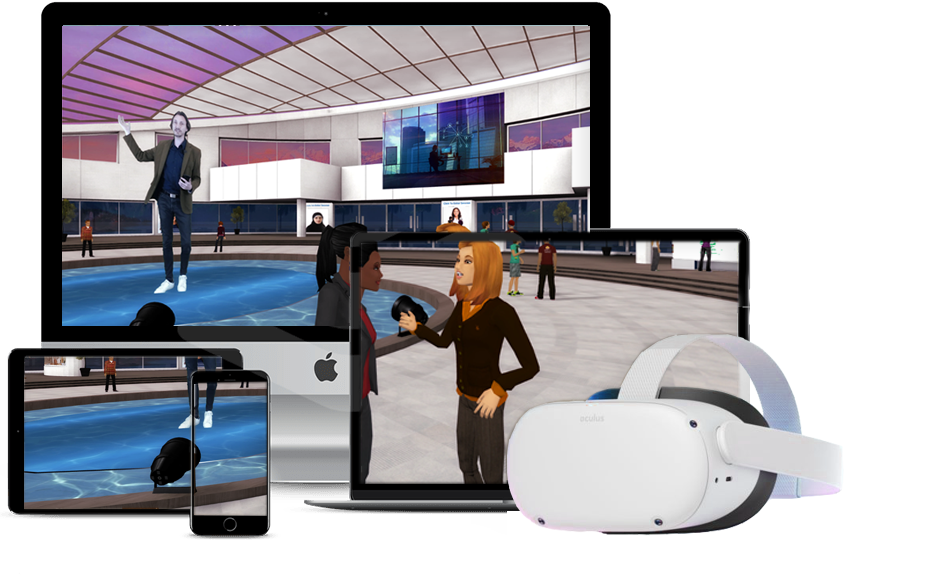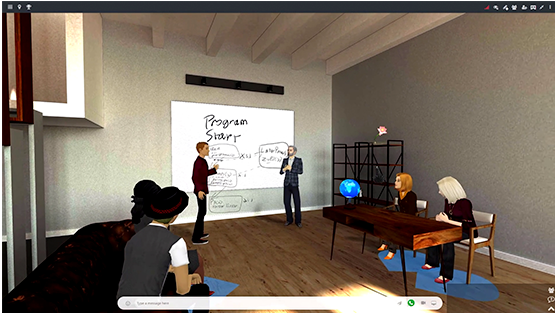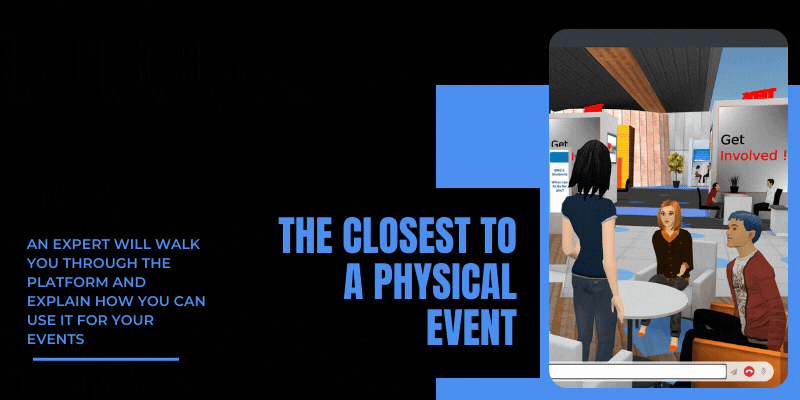As an event industry professional, you know that a virtual conference planning checklist is essential for executing successful online events. This comprehensive guide will delve into the ultimate virtual conference planning checklist to ensure your next virtual conference runs smoothly and exceeds expectations.
We’ll begin by exploring pre-event preparations, such as establishing goals, selecting a platform, and creating an engaging website. Next, we’ll cover crucial aspects of managing the live event, like monitoring attendee engagement and tracking performance metrics.
After the event concludes, our post-event section will provide valuable insights on following up with attendees and analyzing feedback. Additionally, we’ll discuss important security considerations to protect your organization’s data and attendees’ privacy during virtual conferences.
Finally, our logistics-focused section highlights key elements like choosing the right venue for hybrid events and organizing transportation services. With this in-depth virtual conference planning checklist, you can create unforgettable experiences for all participants involved.
Table of Contents:
- Establishing Goals and Objectives
- Conducting Market Research for Targeted Content
- Developing Attendee Personas
- Speaker Selection and Preparation
- Event Website Creation & Ticketing Process
- Selecting Virtual Conference Platforms & Networking Opportunities
- Marketing and Promotion Plan
- Event Execution & Post-Conference Analysis
- Frequently Asked Questions Virtual Conference Planning Checklist
- Conclusion
Establishing Goals and Objectives
To create a successful virtual conference, establish clear goals and objectives. Setting specific goals and objectives will form the basis for your event planning decisions, such as content selection, target audience identification, date/time selection etc. Developing attendee personas based on market research is essential to ensure your event caters to the right target audience. This process will help you decide your online event’s topic, date, and time.
Conducting Market Research for Targeted Content
Market research is crucial in understanding potential attendees’ needs in a virtual conference. You can identify key topics that resonate with your target audience by analyzing industry trends, competitor events, and social media conversations related to your field or theme. Use this information to craft an engaging event agenda, ensuring each session meets their interests and expectations.
Developing Attendee Personas
An effective way of catering to different segments within your target audience is by creating detailed attendee personas. These fictional representations should be based on real data gathered through surveys or interviews with past participants at similar events or members of relevant professional communities.
- Demographics: Age range, gender distribution, geographic location(s), an education level(s), job title(s) etc.
- Pain Points: What challenges do they face professionally? How does attending a virtual conference address these issues?
- Motivations: Why would they attend an online event? Are they seeking knowledge-sharing opportunities? Networking possibilities? Career advancement?
- Tech Savviness: Are they comfortable with using virtual event platforms? What devices do they typically use to access online content?
By understanding your attendees’ needs and preferences, you can tailor your event content, format, and promotional materials to appeal directly to them. This will ultimately help you achieve your attendance goals while providing a valuable experience for all participants.
Establishing clear goals and objectives is essential for a successful virtual conference. Having established clear goals and objectives, it is now time to move on to the selection and preparation of speakers.
MootUp‘s browser-based platform empowers you to “futureproof” your Metaverse, granting seamless access across smartphones, tablets, laptops, and VR/AR headsets without downloading or installing software, ensuring unparalleled convenience for all users.

Key Takeaway:
This checklist is for planning virtual conferences using a no-code platform in the metaverse. It includes all the necessary steps and considerations to successfully produce and host virtual or hybrid events without requiring coding skills.
Speaker Selection and Preparation
To create a memorable virtual conference, it’s essential to select speakers who align with your event theme or subject matter. Equally important is ensuring they have the technical setup for a seamless presentation. Let’s dive into evaluating potential speakers and preparing them for their presentations.
Evaluating Speaker’s Technical Setup
Before inviting a speaker to participate in your virtual conference, assess their technical capabilities by considering lighting, sound quality, WiFi connection stability, and background aesthetics. This will help ensure that attendees can fully engage with the presented content without any distractions caused by poor audiovisual quality. To assist you in this evaluation process:
- Request test videos from potential speakers showcasing their current setup.
- Provide guidelines on optimal lighting conditions and microphone usage.
- Suggest tools like Speedtest to check internet speed and connectivity issues.
- Encourage presenters to use visually appealing backgrounds or recommend platforms like Zoom, which offer customizable virtual backgrounds.
Training Presenters for Seamless Presentations
Equipping presenters with the proper training will ensure they can deliver a captivating virtual presentation. Providing adequate training beforehand ensures that your chosen experts are comfortable using the selected virtual event platform while familiarizing themselves with its features—ultimately leading towards better overall experiences enjoyed by those tuning in live via Zoom calls, etcetera. Here are some tips on how you can effectively train your presenters:
- Create step-by-step guides detailing how to use specific functions within each screencasting software (e.g., screen sharing). li >
- Schedule practice sessions with event organizers to simulate real-time scenarios and address technical concerns. li >
- Encourage speakers to interact with attendees during their presentations by incorporating Q&A segments or utilizing features like live polls. li >
- Provide guidelines on presentation length, format, and content structure for consistency across all sessions. li > ul > Ensuring your virtual conference speakers are well-prepared with the guidelines will guarantee a successful online event resonating with your target audience. Remember, the key lies in providing clear guidance and support throughout the planning process— so don’t hesitate to reach out if additional assistance is needed at any point along this journey.
It is critical to dedicate adequate attention and effort when choosing speakers for an event and equipping them with the necessary technical setup so that their talks run smoothly. With the speaker selection and preparation process complete, it’s time to focus on creating an informative event website and streamlining ticket sales using platforms like Eventbrite.
Key Takeaway:
This checklist outlines the steps for planning a virtual conference using a no-code platform in the metaverse. It covers everything from production to hosting, ensuring that all aspects of the event are considered and executed effectively.
Event Website Creation & Ticketing Process
Creating an event website is one of the most crucial aspects of planning a virtual conferenceisThis serves as a central hub for all information related to your conference, including speaker bios, session schedules (which should be adjusted according to different time zones), registration details, and other relevant content pieces like blog posts or social media updates leading up-to-the-evenAf. By having a well-designed and informative website, you can provide attendees with easy access to all necessary info while also boosting sign-ups.
Designing an Informative Event Website
To create an effective event website that caters to your target audience’s needs, consider incorporating the following elements:
- A clear description of the event theme and objectives.
- An overview of speakers and their respective topics.
- A detailed schedule outlining each session’s date, time (adjusted for various time zones), duration, format (e.g., panel discussion or workshop), etc.
- Contact information for any questions or concerns from potential attendees.
- Social sharing buttons that allow users to easily share your event on platforms such as Facebook or Twitter will help increase visibility among potential attendees.
Streamlining Ticket Sales Using Platforms Like Eventbrite
In addition to designing an attractive and user-friendly event website, setting up a seamless ticketing process is essential. One way is by using popular online ticket sales platforms like Eventbrite, which simplifies things further by providing attendees easy access without having them leave your site altogether. When setting up your ticket sales process through these platforms,
- Ensure that your registration form is easy to navigate and complete.
- Provide a variety of payment options for added convenience and ease of use.
By streamlining the ticketing process, you can make it easier for potential attendees to commit to attending your virtual conference while also keeping track of attendance goals more effectively.

Creating a comprehensive event website and streamlining ticket sales are essential for successful virtual conference planning. Selecting the right platform and providing networking opportunities will help make your event an even greater success.
Key Takeaway:
This checklist outlines the steps for planning a virtual conference using a no-code platform in the metaverse. It covers everything from event setup to hosting, ensuring that all aspects of the event are properly organized and executed.
Selecting Virtual Conference Planning Checklist & Networking Opportunities
The right virtual conference platform is crucial for a seamless and engaging event experience. When selecting your platform, consider compatibility with various devices, additional features such as livestream capabilities, and opportunities for attendees to network before and after the event.
Comparing Screencasting Software Features
You’ll need reliable screencasting software like Zoom, Microsoft Teams, or Google Meet to host a successful virtual conference. Compare the features of Zoom, Microsoft Teams and Google Meet to determine which one is most suitable. For example:
- Device compatibility: Ensure the chosen software works well on devices (desktops, laptops, tablets) and operating systems (Windows, macOS).
- Livestream capabilities: Look for platforms allowing real-time participant interaction during sessions.
- Presentation tools: Evaluate built-in tools such as screen-sharing options or whiteboards to facilitate interactive discussions.
- Analytics tracking: Opt for platforms offering analytics data to help measure attendee engagement levels throughout the event.
Providing Virtual Networking Opportunities for Attendees
Beyond presentations and panel discussions at your virtual conference, offering networking opportunities is essential so attendees can connect. Here are some ways you can foster meaningful connections in an online environment:
- Create dedicated spaces where attendees can chat using text-based channels or video calls within your virtual event platform.
- Organize breakout sessions or roundtable discussions to facilitate smaller group interactions on specific topics of interest.
- Incorporate gamification elements, such as quizzes or challenges, that encourage attendees to interact with one another while having fun and learning more about the conference content.
By selecting a suitable virtual conference platform and providing ample networking opportunities for your attendees, you’ll create an engaging online environment where participants can learn from industry experts and connect with like-minded professionals. Remember that the success of your virtual event relies heavily on these key components – so choose wisely.

When selecting virtual conference platforms, it is important to consider the features of different screencasting software and how they can provide networking opportunities for attendees. To maximize the impact of your virtual conference, a comprehensive promotional strategy should be implemented to ensure maximum visibility and engagement with potential attendees.
Key Takeaway:
This checklist is for planning virtual conferences using a no-code platform in the metaverse. It includes all the necessary steps to produce and host successful virtual and hybrid events, ensuring that everything runs smoothly from start to finish.
Marketing and Promotion Plan
To ensure the success of your virtual conference, it is crucial to develop a comprehensive marketing and promotion plan. You can effectively reach your target audience while driving attendance goals by utilizing various channels such as email campaigns, newsletters, and social media platforms.
Creating Targeted Email Campaigns
Email remains one of the most effective ways to communicate with potential attendees. To create targeted email campaigns for your virtual event:
- Segment your mailing list based on attendee personas or interests.
- Create personalized content that speaks directly to each segment’s needs and preferences.
- Include clear calls-to-action (CTAs) encouraging recipients to register for the event or share it with their networks.
- A/B test subject lines, CTAs, and other elements to optimize open rates and conversions.
Leveraging Social Media for Promotion
Social media platforms are essential tools for promoting virtual events. Here are some strategies you can use:
- Create engaging visuals like infographics or short videos showcasing key highlights of the event – speakers’ expertise or unique session formats – which can be easily shared across different platforms. (Buffer)
- Utilize event-specific hashtags and encourage attendees to use them when sharing their experiences or thoughts about the conference.
- Work with influential people in your sector who can assist in increasing the impact of your expansion and expanding its reach.
- In addition to these strategies, it is essential to update all communications regarding the virtual nature of the event and launch new marketing tactics tailored spectowardy towards online audiences. By following this virtual event planning checklist, you will be well on your way to hosting a successful virtual conference that resonates with your target audience.

